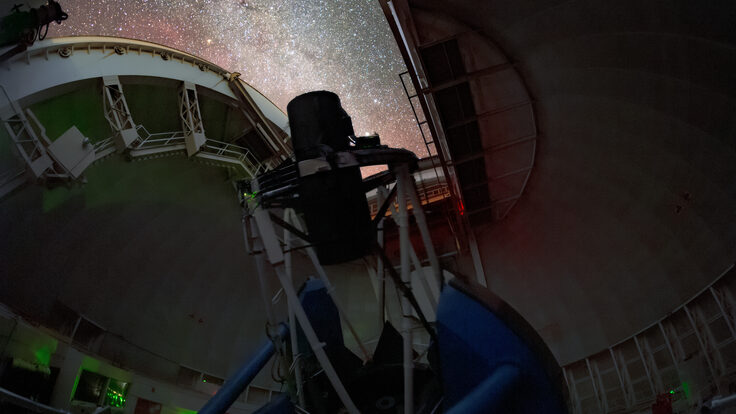 Photo: Diana Rogers, SLAC |
Hot computers
Computing centers are hot--literally. At least, they are in the absence of extensive cooling systems. With an increasing number of computers installed at scientific labs nationwide, the efficiency of those cooling systems is becoming much more important. Just ask John Weisskopf, technical operations manager at the Stanford Linear Accelerator Center. He is responsible for keeping the more than 3500 computers in the laboratory's main computer center from overheating.
The cooling process starts at SLAC's water cooling plant, where nearly 300 tons of chilled water is circulated to the computer center. The water is distributed to the building's cooling coils, which work like giant radiators in reverse, to extract heat from the air. The cooled air is blown into the 12-inch raised floors of the computer rooms. The current system can cool at a rate of 125 watts per square foot, Weisskopf said, but with a yearly increase in the number of computers installed, an ideal system needs to handle 500-600 watts per square foot.
"We are at the breaking point for old-fashioned under-floor cooling systems," Weisskopf says. "We're stuffing thousands more little hot computers in here, and it's more and more difficult to power and cool them." Four air handlers, which resemble 14-foot-long giant refrigerators, have been installed to cool areas of the center that produce excessive amounts of heat. Six more are scheduled for installation before winter. But even those won't be sufficient for long, Weisskopf says. By spring 2006, Weisskopf hopes to install a water-cooling system that will deliver cold water to each individual computer rack in the center.
The ultimate solution is to direct chilled water as close to the computers as possible. Some manufacturers are working on cooling systems that would channel chilled water directly to computer chips. But until the plumbing intricacies are solved, water-cooled racks are the best option for SLAC, Weisskopf says. "If you get a leak [near a computer chip], you're in trouble," he says.
Kendra Snyder
Click here to download the pdf version of this article.






